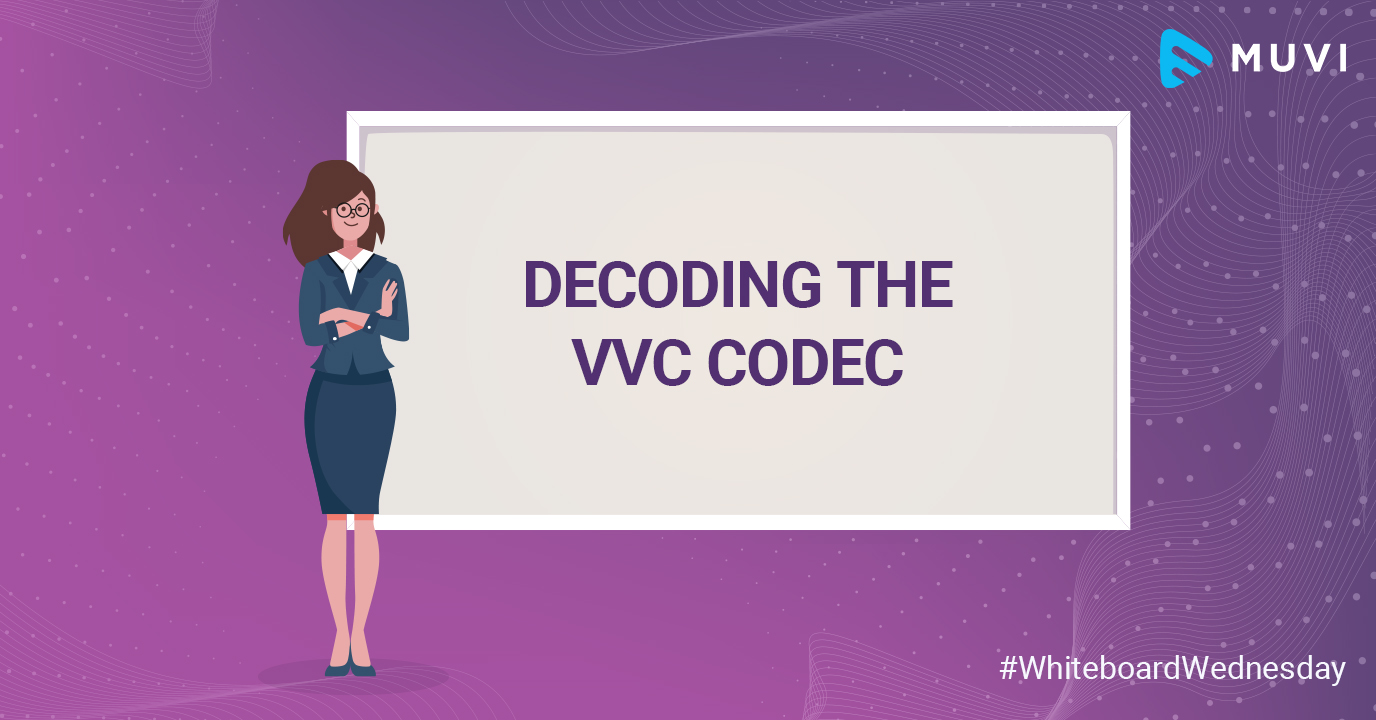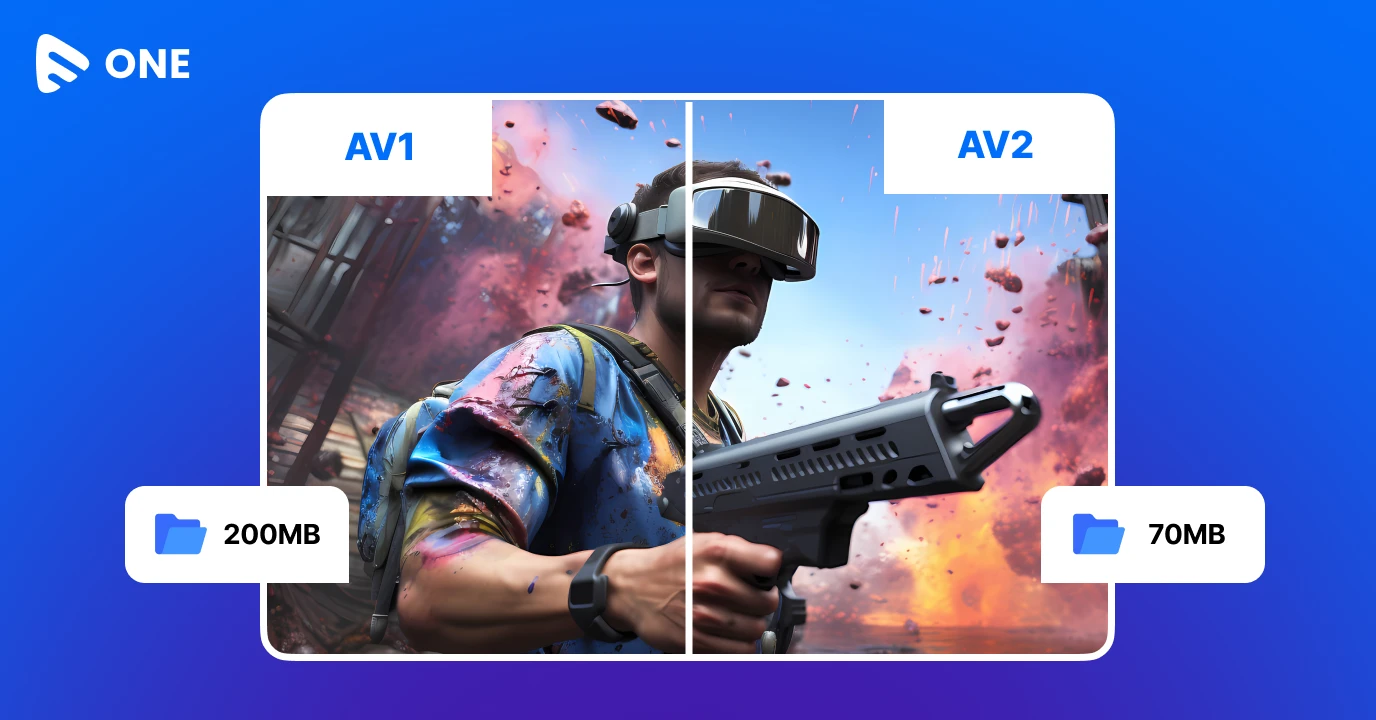It’s time for another interesting Whiteboard Wednesday session to make your streaming journey easier.
In today’s blog we will be elaborating on the newly developed and highly capable VVC codec, particularly, what it is used for, its benefits and VVC’s role in the online video industry. Before that, let’s quickly run over the basics of video encoding and codecs.
What is Video Encoding?
Video encoding is the process of converting raw video footage into a digital format. The encoding process requires the use of an encoder, which comes in the form of both hardware and software. While hardware encoders are fast and reliable, they are also bulky and expensive.
Software encoders are programs that you run on your computer, are as powerful as hardware encoders, but cost you a fraction of the price.
What is a Codec?
A portmanteau of ‘coder-decoder’ or ‘compressor-decompressor’, a codec is a technology to distribute a video or audio file for playback, perform the function of shrinking or compressing the raw audio/video data into a more manageable size. The video is shrunk considerably (compressing) for storage and transmission and later decompressed for viewing.
A codec should not be confused with a container format which is a type of a file format, or in other words, a container for storing compressed audio and video data, audio codec, video codec, closed captioning, and any associated metadata such as subtitles, size, etc.
To know more about container formats, read our blog, Top 5 Video Formats in 2021: A Detailed Guide
What is VVC?
VVC or Versatile Video Coding is a new and evolving video compression standard, also known as H.266. Developed by the Joint Video Experts Team (JVET) at International Telecommunication Union (UN specialized agency for information and communication technologies – ICTs) in 2020, VVC is predicted to be the future of video streaming, particularly video conferencing, OTT streaming, mobile telephony. It’s a hybrid codec that is particularly complex and most standard streaming hardware is not yet equipped to use this codec. However, the VVC boasts of extremely good performance – it’s target compression performance is a 30% to 50% bitrate reduction as compared to the HEVC Main Profile with the same perceptual quality and an encoding complexity of approximately 10 times or more than HEVC.
What is VVC used For?
VVC is an emerging standard and was just developed a year back, but it has tremendous potential to revolutionize the OTT industry with its high compression performance compared to existing codecs like H.264 and H.265. The codec was named Versatile Video Coding because it is “meant to be very versatile and addresses all of the video needs from low resolution and low bit rates to high resolution and high bitrates, HDR, 360 omnidirectional and so on.”
- Apart from video encoding, VVC has a lot of other use cases including video conferencing, OTT streaming
- Since the inception of the pandemic, video conferencing and OTT streaming has reached larger adoption with people working remotely and consuming content on streaming platforms
- VVC is 27% more efficient than HEVC with UHD content and 33% more efficient with HD video content which makes streaming 4K resolution videos easy with VVC
- VVC can also be used for 360 streaming or immersive video streaming, which provides a more lifelike viewing experience. This type of streaming is gaining a lot of momentum in the industry especially with the advancement in VR and AR technologies
Advantages of Using VVC
- A major benefit of VVC coding is that it is significantly more capable of efficient data compression than other leading codecs
- It’s a highly versatile codec and its ability to cater to video needs from low resolution and low bit rates to high resolution and high bitrates is something most prevalent codecs were not be able to address
- Industry leaders have predicted VVC’s usefulness in the online gaming industry
Is VVC a Lossy or Lossless Codec?
For starters, Lossless and lossy compression both reduce file size, but the only difference being the former kind of compression yields more compact files than the latter. VVC codec uses lossy compression, making it ideal for video streaming.
Also Read: Video Streaming Codecs & Container Formats: All you Need to Know
VVC Licensing
It appears that a third party, the Media Coding Industry Forum, will create profiles and levels based upon licensing terms proposed by each IP owner, in order to make VVC, royalty-bearing. It also seems likely that there will be multiple patent pools. In this schema, pool pricing could determine which encoding tools are included in each profile.
Wrapping Up,
VVC is not yet standardized and it is still not compatible with major live streaming platforms and other technology at this time. However, it has a lot of potential by virtue of which industry leaders are betting on VVC to be the standard video streaming codec in the future.
Don’t forget to share your thoughts in the comment section below. You can also tag @Muvi with #WhiteboardWednesday on Twitter and share your thoughts.
See you in our next Whiteboard Wednesday segment. Till then Happy Streaming with Muvi!
Sign Up for our 14-day Free Trial, now!













Add your comment